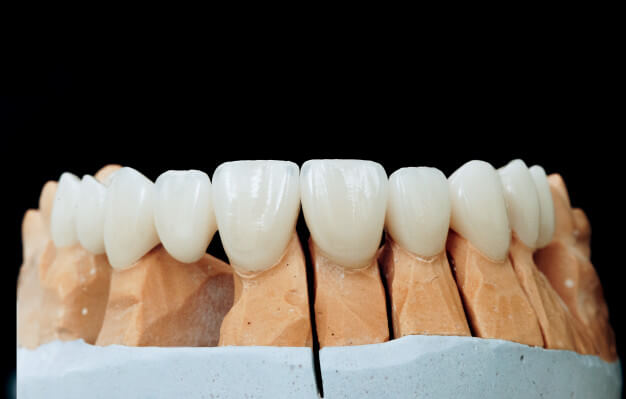Below are the porcelain Bridge Questions Answered. So you’ve lost a tooth due to accident, injury, or gum disease. Your dentist is recommending a porcelain bridge, and you want more information to make sure this is the right choice for you.
You’ve come to the right place! The Houston Dentists are here to answer your most pressing questions about porcelain bridges and all of your other general and cosmetic dentistry concerns.
Why might I need a bridge?
Bridges are used to replace a lost tooth or several missing teeth. You might wonder why it’s important to replace a tooth, especially if it’s in the back of the mouth where most people won’t see the gap. But the benefits of dental bridges are more than just cosmetic. Bridges can also:
- Keep your remaining teeth in position
- Correct a misaligned bite
- Improve chewing function and speech articulation
- Give you a more youthful appearance by improving the internal structure of your face
What is a bridge?
A dental bridge is exactly what it sounds like – it bridges the gap caused by a missing tooth or teeth. The components of the typical bridge include:
- Two crowns – one covering each of the teeth on either side of the gap (also known as abutment teeth)
- A false tooth or teeth (called pontics) to fill the gap
What are bridges made of?
- The false teeth in bridges can be made of all porcelain, or a combination of metal and porcelain.
- All-porcelain bridges often are preferred because they are more attractive; unlike bridges with a metal substructure, they don’t have the ugly gray line at the gum line.
Alternatives
- One alternative to a bridge is a dental implant.
- Whereas a porcelain bridge requires the teeth on either side of the missing tooth or teeth to be filed down, an implant does not require any modification to the surrounding teeth. For this reason, implants are a solid alternative if no healthy abutment teeth are available.
- Caring for an implant and the teeth surrounding it is also easier; since the bridge completely covers the surrounding teeth, flossing can be difficult.
- A second alternative to a porcelain bridge is a removable partial denture (or “flipper”). If you need to replace many teeth, we may recommend this option.
What will a bridge cost?
The cost depends on many factors, such as the size of the bridge. Dental insurance typically pays for a percentage of the cost, and your dentists may also offer dental financing options.
We hope this primer answers your questions about porcelain bridges. If you are in the Houston area, please give us a call, or drop by for a complimentary consultation, when one of our top-rated dentists will review your options and determine the best treatment plan for you.

